Greenhouse questions?
The Jungle Explorer
13 years ago
Featured Answer
Sort by:Oldest
Comments (26)
jrslick (North Central Kansas, Zone 5B)
13 years agolast modified: 9 years agoeaglesgarden
13 years agolast modified: 9 years agoRelated Discussions
Greenhouse Questions for beginner
Comments (11)It's not difficult but there's a learning curve. I fed my family of three and sold fresh greens in a 22 x 48 greenhouse all of last winter. You don't have to heat the greenhouse - you're better off if you don't. You need to learn what will grow and can be harvested in an unheated greenhouse. I bounce between zones 4 and 5. The greenhouse will add another half zone to bump you up to 6a. A layer of heavy duty row cover on hoops will bump you up to 6b. Don't try to grow tomatoes, peppers and other warm season crops in an unheated greenhouse in winter. You'll need to grow cold weather greens and root crops. Growth stops here around mid December and doesn't start again til about the end of the first week in February when the sun has gotten a little higher. During the time greens and roots aren't growing you can harvest fresh vegetables. You'll need to get your plants and seeds in with plenty of time for them to get established before they stop growing. The closer you get to December the slower the plants are going to grow. I'll transplant seedlings in September and October. Seeds will go in sometime in late August as space allows. Carrots, beets and turnip can be harvested in the winter. Tatsoi, bok choi, beet greens, cold weather lettuces and spinach are easy to grow in an unheated greenhouse. Eliot Coleman's book Four Season Harvest is essential. I'll link to it below. While you're on that website, take a look at the photo gallery! Winter Harvest Manual Four Season Harvest Good luck!...See MoreDummy greenhouse questions
Comments (0)I am planning to build a new house in Southern California mountains about 2 hours from Los Angeles and San Diego. At 4700 ft elevation, it's USFA zone 8b. For 7 months or so, day time would be upper 70s to lower 90s with occasional tribe digits., and night time in the 50s to 70s. For the rest of year, day time 40s to 50s and night time 20s to 30s. A week or so of snow. Being California, dry hot summer with wet (although not lately) colder winter. I would like to have a biggish lean to greenhouse on the south side of the house. Being a total newbie, these are my objectives, questions and concerns: 1. The south facing 15ft x 45ft glass or PC greenhouse will double as the warm zone in the winter to gather heat in the day and share with the rest of the house in evening hours. 2. The greenhouse could be open to the living area of the house, thinking of big sliding doors or even a glass garage door. 3. Planning to tile and have an aquaponic pool in the green house, perhaps with split AC/heatpump units powered by solar panels. 4. Not sure if the green house may become too hot even with heavy shade cloth in the summer? Being in very dry climate, perhaps swamp coolers for the summer or split AC? 5. Winters are really quite mild, would the greenhouse retain enough heat or even too much heat? 6. Being a permanent fixture, should I go for a curvy top design or a more straight line design? We do have couple of weeks of snow. 7. Any other concerns other than cost that I should start looking into? Thanks for helping this newbie....See MoreHoop greenhouse question...
Comments (3)I live in north central Sask Canada. We put up a 16x24 double poly greenhouse two years ago and we get lots of snow. The fans are running all year, once in the winter, when the fans stopped because of power outages the snow accumulated between the hoops sagging the plastic because it did not all slide off. This put pressure not just on the ridges but on the plastic itself. You would be alright in rain, but in the event of freezing rain or the odd heavy snow it would help to have them running. Could you turn them on when snow is expected?...See MoreJiffy Peat Pit Greenhouse question
Comments (10)The only reason not to do it is if you have critters that will eat the seeds. This is how I start the seeds for my hydroponic system (only using rockwool instead of peat), and this year I was puzzled because I was having such poor luck, with a large dead zone in the center of the tray, and only random seedlings around the outside. Then one night I was out there and discovered an enormous Cuban tree frog lounging happily on the nice damp sofa made by the rockwool, reaching all around to dig out everything at all spicy that I had planted and squashing all the poor just-up seedlings under the center area where he was lying. So yes, this is a good idea if you have some way to protect them, especially at night when everyone goes foraging. ETA Not the plastic, something like screening that will let the air circulate. I've thought about getting one of those metal screen covers for picnic food for next season....See MoreThe Jungle Explorer
13 years agolast modified: 9 years agoThe Jungle Explorer
13 years agolast modified: 9 years agojrslick (North Central Kansas, Zone 5B)
13 years agolast modified: 9 years agoDan _Staley (5b Sunset 2B AHS 7)
13 years agolast modified: 9 years agoThe Jungle Explorer
13 years agolast modified: 9 years agoDan _Staley (5b Sunset 2B AHS 7)
13 years agolast modified: 9 years agoThe Jungle Explorer
13 years agolast modified: 9 years agofunnylady
13 years agolast modified: 9 years agoDan _Staley (5b Sunset 2B AHS 7)
13 years agolast modified: 9 years agojrslick (North Central Kansas, Zone 5B)
13 years agolast modified: 9 years agoThe Jungle Explorer
13 years agolast modified: 9 years agoDan _Staley (5b Sunset 2B AHS 7)
13 years agolast modified: 9 years agoThe Jungle Explorer
11 years agolast modified: 9 years agokudzu9
11 years agolast modified: 9 years agoThe Jungle Explorer
11 years agolast modified: 9 years agokudzu9
11 years agolast modified: 9 years agoThe Jungle Explorer
11 years agolast modified: 9 years agokudzu9
11 years agolast modified: 9 years agoThe Jungle Explorer
11 years agolast modified: 9 years agocole_robbie
11 years agolast modified: 9 years agoThe Jungle Explorer
11 years agolast modified: 9 years agocole_robbie
11 years agolast modified: 9 years agoThe Jungle Explorer
11 years agolast modified: 9 years ago
Related Stories

GREEN DECORATING8 Questions to Help You See Through Green Hype
With the ecofriendly bandwagon picking up some dubious passengers, here's how to tell truly green products and services from the imposters
Full Story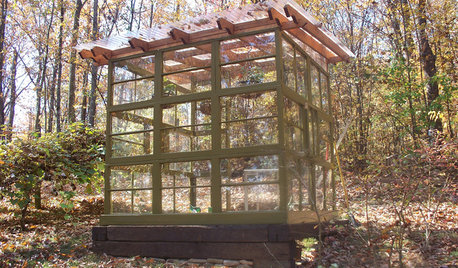
GARDENING AND LANDSCAPINGSee a Family Greenhouse Grown From Scraps
Can-do resourcefulness and less than $400 lead to a new 8- by 8-foot home for plants on a Tennessee family's property
Full Story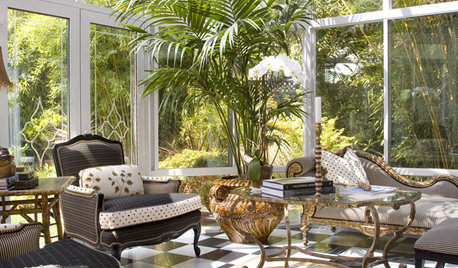
DECORATING GUIDESGo for a Greenhouse Effect With an Exotic Conservatory
Cultivate a rarified hothouse feel with or without all-glass walls; these inspiration photos and product picks show you how
Full Story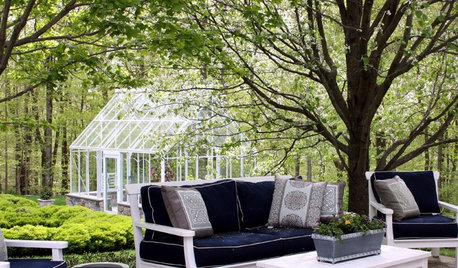
Houzz Call: Show Us Your Greenhouse
Submit a photo of your greenhouse and share what's growing!
Full Story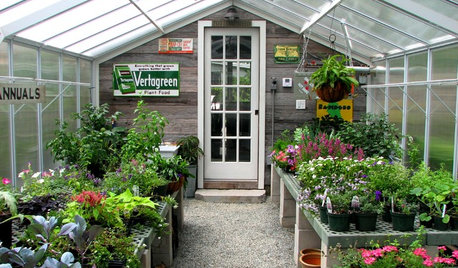
OUTBUILDINGSRoom of the Day: An Old Shed Becomes a Spa and Greenhouse
A garden-loving couple create the perfect place to have a soak and putter with their plants year-round
Full Story
HOUSEPLANTSHow to Grow Orchids Indoors
Orchids are the exotic aristocrats of the flower world and can make themselves comfortable in almost any home
Full Story
INSPIRING GARDENSWe Can Dream: Lush Life on a Historic Normandy Estate
New gardens surround centuries-old buildings on a 10-acre property in France, creating a beautiful haven
Full Story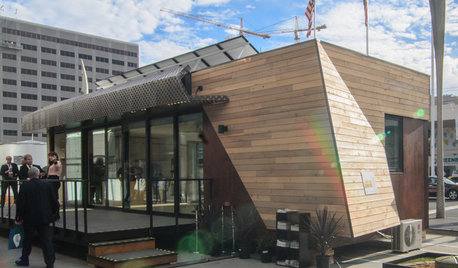
GREEN BUILDINGMeet a New Resource-Saving Prefab Design
Energy efficiency and a resourceful layout combine with ecofriendly materials in this noteworthy prototype for modular homes
Full Story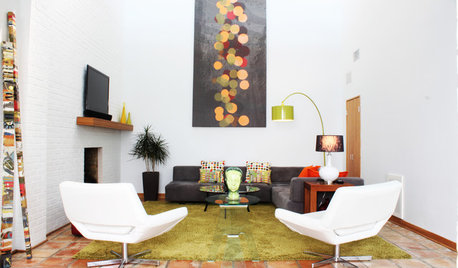
HOUZZ TOURSMy Houzz: Dive Into a Cajun Country Home With an Indoor Pool
Drenched in sunshine from a massive glass atrium roof, this newly redesigned Louisiana home works swimmingly
Full Story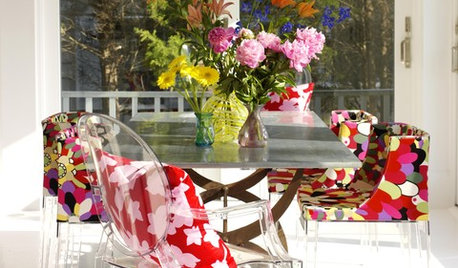
PORCHESThe Sunporch: A Room for All Seasons
Embrace the outdoors while staying sheltered from the elements with a bright, lounge-ready sunporch
Full Story



jrslick (North Central Kansas, Zone 5B)